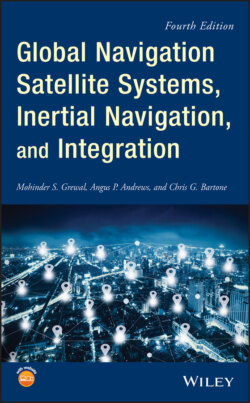Читать книгу Global Navigation Satellite Systems, Inertial Navigation, and Integration - Mohinder S. Grewal - Страница 41
1.3.1.1 Theoretical Foundations
ОглавлениеIt has been called “Newtonian navigation” [28] because its theoretical foundations have been known since the time of Newton.2
Given the position x(t0) and velocity v(t0) of a vehicle at time t0, and its acceleration a(s) for times s > t0, then its velocity v(t) and position x(t) for all time t > t0 can be defined as
(1.1)
(1.2)
It follows that given the initial position x(t0) and velocity v(t0) of a vehicle or vessel, its subsequent position depends only on its subsequent accelerations. If these accelerations could be measured and integrated, this would provide a navigation solution.
Indications that this can be done can be found in nature:
1 Halters are an extra set of modified wings on some flying insects. During flight, these function as Coriolis vibratory gyroscopes (CVGs) to provide rotation rate feedback in attitude control. Their function was not known for a long time because they are too tiny to observe.
2 Vestibular systems include ensembles of gyroscopes (semicircular canals) and accelerometers (saccule and utricle) located in the bony mass behind each of your ears. Each of these is a complete 3D inertial measurement unit (IMU), used primarily to aid your vision system during rotations of the head but also useful for short‐term navigation in total darkness. These have been evolving since the time your ancestors were fish [29].
The development of man‐made solutions for inertial navigation came to have the same essential parts, except that they are not biological (yet).
